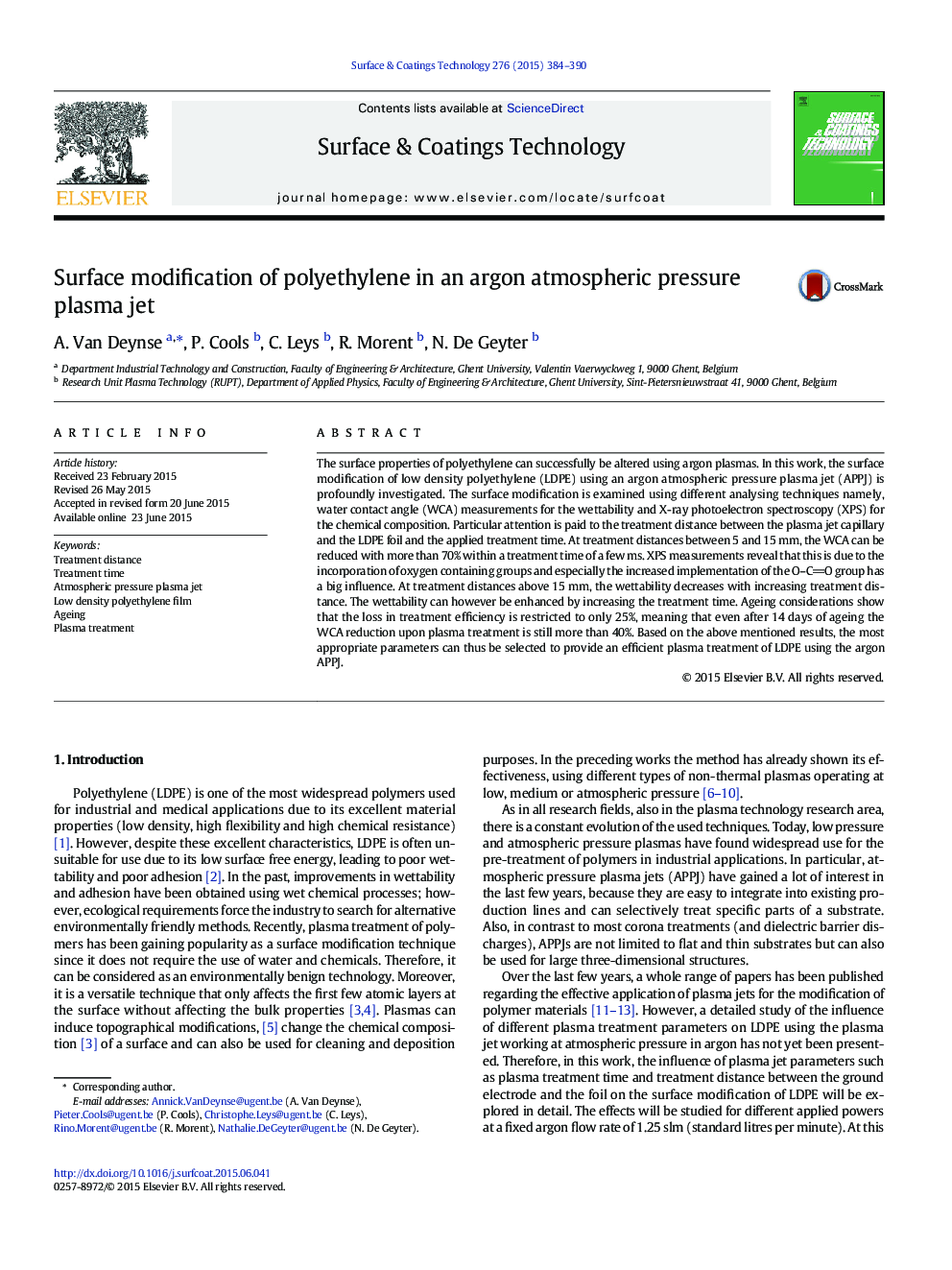| Article ID | Journal | Published Year | Pages | File Type |
|---|---|---|---|---|
| 1656996 | Surface and Coatings Technology | 2015 | 7 Pages |
•Study of treatment distance and time on APPJ Ar plasma treatment of LDPE•At treatment distances below 15 mm the wettability increases with more than 70%.•Especially the incorporation of O–CO groups is enhanced at low distances.•The ageing process is restricted to 25% loss of treatment efficiency.
The surface properties of polyethylene can successfully be altered using argon plasmas. In this work, the surface modification of low density polyethylene (LDPE) using an argon atmospheric pressure plasma jet (APPJ) is profoundly investigated. The surface modification is examined using different analysing techniques namely, water contact angle (WCA) measurements for the wettability and X-ray photoelectron spectroscopy (XPS) for the chemical composition. Particular attention is paid to the treatment distance between the plasma jet capillary and the LDPE foil and the applied treatment time. At treatment distances between 5 and 15 mm, the WCA can be reduced with more than 70% within a treatment time of a few ms. XPS measurements reveal that this is due to the incorporation of oxygen containing groups and especially the increased implementation of the O–CO group has a big influence. At treatment distances above 15 mm, the wettability decreases with increasing treatment distance. The wettability can however be enhanced by increasing the treatment time. Ageing considerations show that the loss in treatment efficiency is restricted to only 25%, meaning that even after 14 days of ageing the WCA reduction upon plasma treatment is still more than 40%. Based on the above mentioned results, the most appropriate parameters can thus be selected to provide an efficient plasma treatment of LDPE using the argon APPJ.
